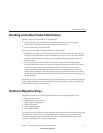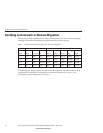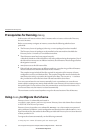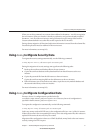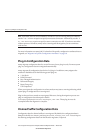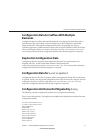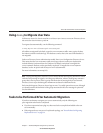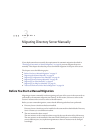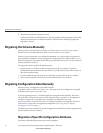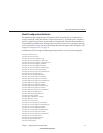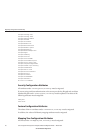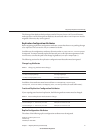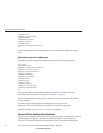
Using dsmig to Migrate User Data
In Directory Server 5.2, data is stored in serverRoot/slapd-instance-name/db. Directory Server
6.0 stores user data in instance-path/db.
To migrate data automatically, run the following command:
$ dsmig migrate-data old-instance-path new-instance-path
All suxes are migrated by default, except the o=netscapeRoot sux. dsmig copies the data,
the indexes, and the transaction logs. The database context, that is, the state of the database, is
not migrated.
In the new Directory Server administration model, there is no Conguration Directory Server.
This means that the o=netscapeRoot sux is no longer relevant, unless your deployment
includes Identity Synchronization for Windows. By default, dsmig does not migrate the
o=netscapeRoot database, unless specically requested. To migrate the o=netscapeRoot
database, use the -N option with the migrate-data subcommand.
For more information, see dsmig(1M).
Note – During data migration, Directory Server checks whether nested group denitions exceed
30 levels. Deep nesting can signify a circular group denition, where a nested group contains a
group that is also its parent. When a group with more than 30 nesting levels is encountered,
Directory Server stops calculating the isMemberOf attributes for additional levels.
Each time this happens, Directory Server logs an error. You safely ignore these errors, although
you should examine the denition of the group mentioned in the error message for potential
circular denitions.
Tasks to be Performed After Automatic Migration
If you have used dsmig to migrate your server automatically, only the following two
post-migration tasks must be completed:
■
If you have customized user plug-ins, these need to be recompiled and added to the new
server manually.
■
If the migrated server was part of a replicated topology, see “Issues Related to Migrating
Replicated Servers” on page 52
.
Taskstobe PerformedAfter AutomaticMigration
Chapter2 • AutomatedMigration Usingthe dsmigCommand 35
SunCondential:Registered



